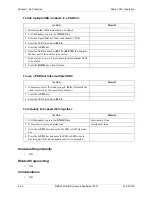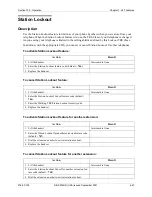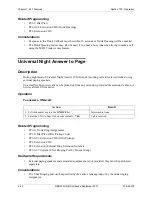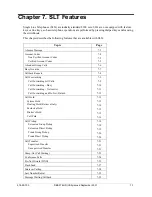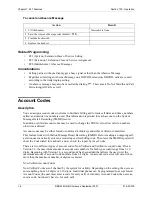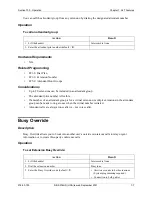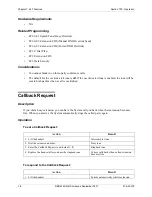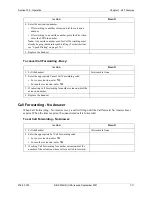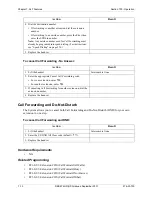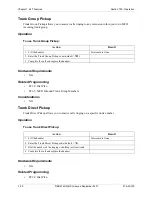
Section 700 - Operation
Chapter 7. SLT Features
576-50-700
DBS 576HD (USA) issued September 2001
7-5
Non-Verified Account Codes can be assigned to outgoing calls. The user either enters the Code before
accessing an outside line (for forced or voluntary Codes).
Verified Account Codes
Verified Account Codes entered by phone users must match a 4-digit or 10-digit code that has been
preprogrammed into an Account Code Table. Depending on the setting, the user can enter anything
from 1-4 digits or 1-10 digits. These codes can also be either forced or voluntary. You can program
these codes with their own Toll Restriction Service (TRS) Class assignment so that, when entered,
they will override the extension’s TRS Class. Thus, Verified Account Code users can “float” from
phone to phone, placing calls that would normally be restricted on that phone.
Non-Verified Account Codes
Non-Verified Account codes are voluntary codes. (i.e., You do not have to enter an account code
before making a call.)
You can assign Non-Verified Account codes to outgoing calls only. To assign an account code to an
outgoing call, you enter the account code before making the call.
Operation
To enter an account code before making a call:
Verified Account Codes
Stations restricted from outside call origination by Toll Restriction Service (TRS) can be allowed to
make outgoing calls by entering a Verified Account code that changes the TRS. After a call is made,
the SMDR record for the call will show the verified account code.
Operation
To make an outside call that requires an account code:
Action
Result
1. Lift the handset.
Intercom dial tone
2. Enter the Account Code feature code (default =
8#
).
3. Enter the Account Code (up to 10 digits).
4. Press the
#
key.
5. Enter a trunk access code.
6. Dial the phone number.
Action
Result
1. Lift the handset.
Intercom dial tone
2. Enter the Verified Account ID code (default =
8#
).
3. Enter the Account Code (max. 10 digits).
4. Press the
#
key.


